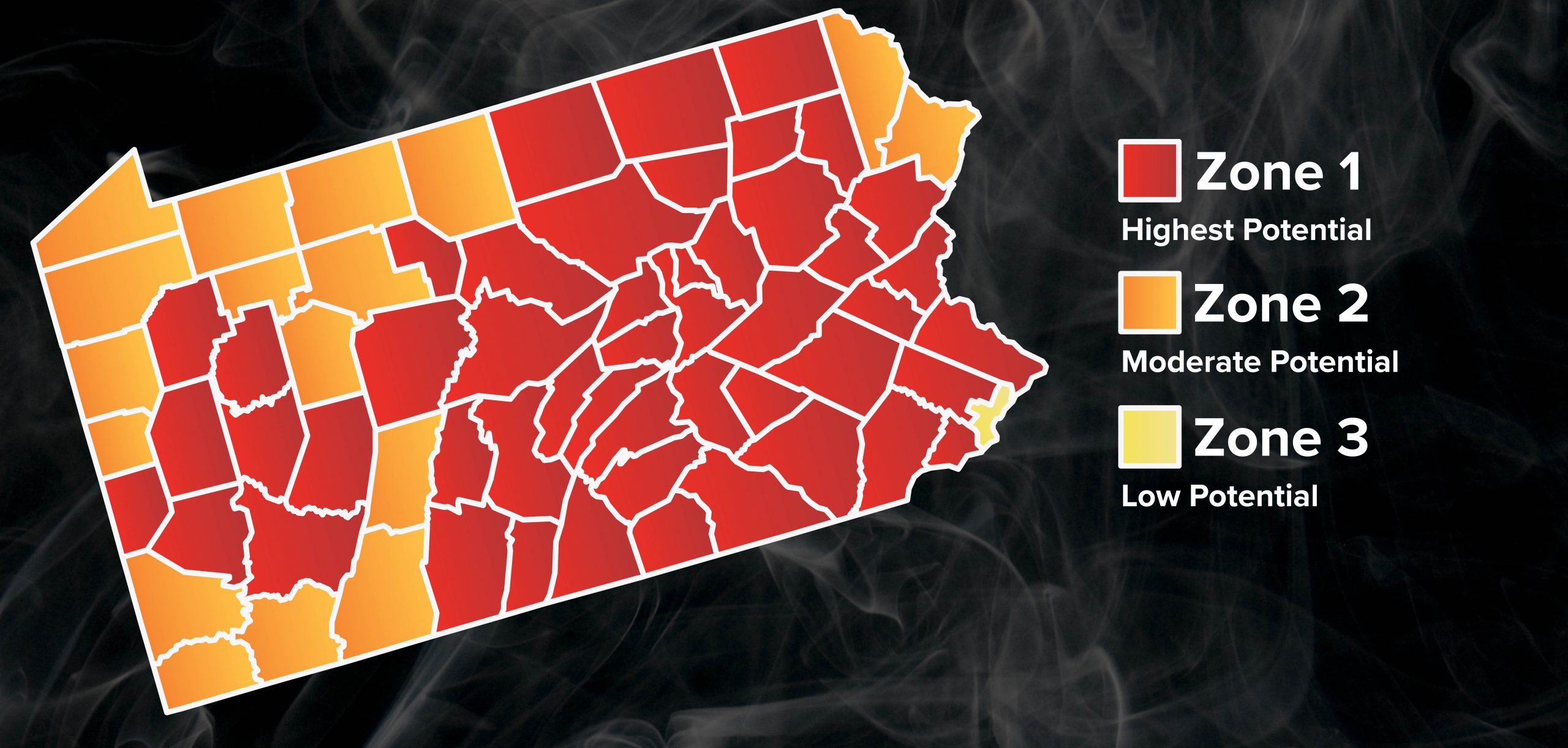You may have heard about Radon, but weren’t sure what it was or where it came from. Maybe you heard about the health effects of Radon exposure and were concerned about Radon being in your home or business but weren’t sure how to find out for sure.
These questions are certainly understandable. It feels like we weren’t even talking about Radon just a few years ago. So where did Radon come from and what can you do about it? We’re happy to answer these common questions.
Where did Radon come from?
In short, Radon has always been here. It occurs naturally in the soil beneath our homes, rising up to the surface and sometimes into buildings. Because you can’t see, taste, or smell Radon gas, we simply didn’t know it was there and weren’t aware of the health hazard it represented. Much like Asbestos and Lead, the hazard was always there, we just now better recognize it and know how to address it safely.
How dangerous is Radon?
Over the years we’ve learned a lot more about Radon and the health effects we can now attribute to it. Radon gas exposure is not considered the 2nd leading cause of lung cancer behind cigarettes and the leading cause among non-smokers.
Studies have shown that Radon gas particles release small bursts of energy as they decay, like little explosions, that can damage lung tissue, and significantly increase your chances of developing lung cancer. This is why agencies like the Department of Environmental Protection have committed so much energy to awareness campaigns, research, and response activities.
How does Radon get in your home?
Radon can enter your home one of two ways, either as a gas entering your home through its foundation, or through your water supply. Here are a few things to keep in mind:
Radon Gas – Entering primarily through cracks or gaps in your foundation, Radon gas can accumulate inside your home, reaching potentially dangerous levels. Due to the focus on increased energy efficiency of homes, and the general tightening up of construction, Radon gas is now less able to escape or dissipate, increasing overall Radon levels and increasing the potential for Radon gas to migrate up to 1st and 2nd story living spaces.
Radon in Water – For homes supplied with water from wells, Radon can contaminate the water and enter your home through your faucets, showers, etc . While studies are still ongoing into the effects of consuming water contaminated with Radon, they have discovered that Radon in a home’s water supply does increase the airborne Radon levels. This is due largely to the disbursement of Radon gas from running water in faucets and showers, but it stands to reason that something that’s hazardous to breath is also hazardous to drink. As a result, we expect future studies and research to better quantify the health effects of Radon in water.
How do you know if you have high Radon?
Unfortunately, since Radon gas is odorless, colorless, and tasteless, you can’t recognize a Radon issue with any of the senses we have available to us. As a result, we have to rely on specialized Radon testing to determine if, and to what extent, a Radon issue may exist in a property.
There are a few options available to homeowners looking to test for Radon, including home tests (we recommend tests that need to be sent in to a lab for analysis), as well as professional Radon Testers (many Home Inspectors do this). The cost is generally very reasonable and you should have your results in a few days.
What can be done to reduce your Radon level?
Fortunately, Radon issues are relatively easy to solve with the installation of a Radon Mitigation System. Depending on whether you need a system that addresses Radon gas, Radon in Water, or both, a licensed Radon Mitigation Contractor is able to design a system that will meet the needs of your property, remove the dangerous Radon gas, and vent it outside above your roof.
As geological changes can occur over time that affect the path of Radon gas below your home, it’s recommended to have your home retested every two years to ensure the Radon level is still below the 4.0 pCi/L action level and that adjustments to the Radon Mitigation System aren’t necessary.
We realize that Radon can be a new concern for many homeowners as it was something they may not have been aware of before. Hopefully this answers some questions you may have about Radon and what steps are available to test for and address Radon issues. If you have any questions we didn’t address here, please don’t hesitate to reach out to us directly, we’re happy to help!
About Disaster Blaster
Disaster Blaster is an indoor environmental firm serving the Northeastern PA Area. We have been providing our local area with unparalleled radon mitigation, water damage mitigation, basement waterproofing, mold remediation, asbestos abatement, and fire / smoke restoration services for decades, and are proud to have been named The World’s Greatest Indoor Environmental Firm. For more about Disaster Blaster, as well as more helpful tips, please visit our website at: www.disasterblaster.com or call our office at (570) 963-1123.


